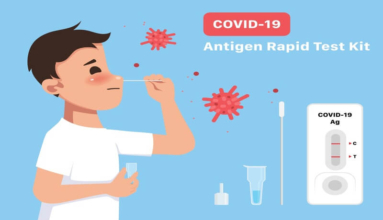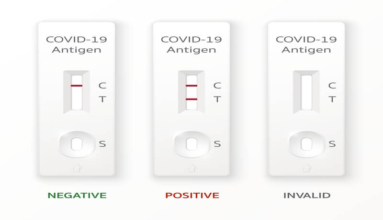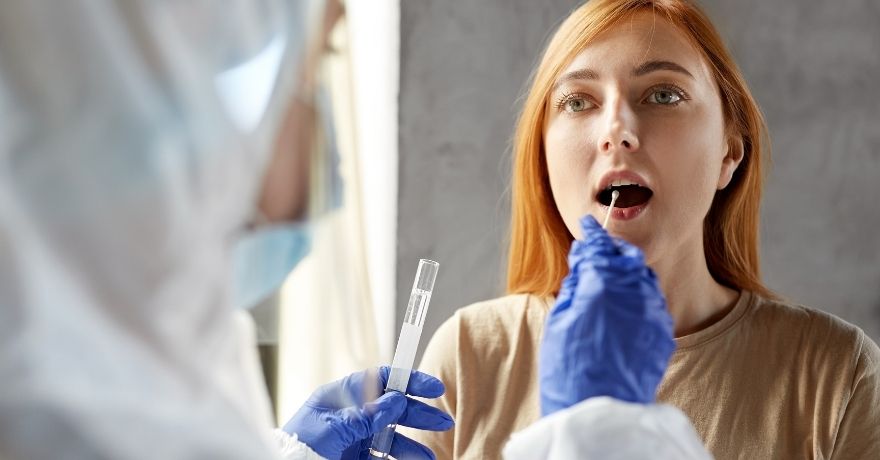Fast COVID-19 TEST
Fast COVID-19 Testing Options: PCR, Rapid Antigen, and Antibody Tests
Accurate and reliable COVID-19 testing remains a cornerstone in managing and controlling the spread of the virus. With various testing options available, it is crucial to understand the unique purposes and capabilities of each test. In this guide, we delve into three types of COVID-19 tests commonly used for home testing: the PCR molecular test, the rapid antigen test, and the antibody test. Each of these tests plays a significant role in diagnosing active infections, determining past exposure, and guiding public health strategies. These tests meet the highest global standards set by WHO and CDC to ensure accuracy and reliability.
PCR Molecular Test at Home (COVID-19 PCR Test)
The PCR test, short for polymerase chain reaction test, is the gold standard for detecting active COVID-19 infections. This test identifies the virus’s genetic material (RNA) with a high degree of precision. It is particularly effective for individuals displaying symptoms or those who have had known exposure to the virus. PCR testing is sensitive enough to detect even low levels of the virus, making it ideal for confirming cases, including asymptomatic infections.
When to Use the PCR Test
- Symptomatic individuals: Best performed 48 hours after symptom onset for accurate detection.
- Asymptomatic individuals: Recommended after known exposure to COVID-19, even if no symptoms are present.
- Travel requirements: Many destinations require negative PCR test results as part of entry protocols.
Steps for Self-Administering the PCR Test at Home
Performing a PCR test at home involves following strict guidelines to ensure accurate results:
- Wash and sterilize your hands with an alcohol-based solution.
- Carefully pour the solution from the provided bottle into the extraction tube.
- Insert the swab deep into your nostril, reaching the nasopharynx (the upper part of your throat), and rotate it several times to collect a sample.
- Place the swab into the extraction tube and stir thoroughly for 15 seconds.
- Secure the tube’s cap tightly and shake vigorously to mix the solution.
- Add 3 drops of the solution into the designated sample port on the testing device.
- Wait for the results, which typically appear within 10 minutes.
Interpreting PCR Test Results
Understanding your test results is crucial for taking the next steps:
- Positive Result: Two red lines appear (one at the control area “C” and one at the test area “T”), confirming an active infection. Immediate isolation and medical consultation are advised.
- Negative Result: Only one red line appears at the control area “C,” indicating no detectable virus. However, if symptoms persist, a follow-up PCR test is recommended.
- Invalid Result: No line appears in the control area “C,” making the test invalid. In this case, repeat the test with a new kit.
Professional healthcare providers often use the One Step Real-Time PCR method, collecting samples from either the nasopharyngeal or oropharyngeal regions. Nasopharyngeal swabs are generally preferred due to their superior accuracy in detecting the virus.
Rapid Antigen Test at Home
The rapid antigen test is designed to detect the presence of viral proteins, also known as antigens, in the upper respiratory tract. It is an effective diagnostic tool during the peak or acute phase of infection when the viral load is highest. With results available in as little as 15 minutes, this test is a convenient option for quickly identifying active COVID-19 infections.
Benefits of the Rapid Antigen Test
- Speed: Provides results in minutes, making it ideal for on-the-spot testing.
- Convenience: Suitable for use at home, workplaces, or public events.
- Cost-effectiveness: Generally more affordable than PCR tests.
Steps for Self-Administering a Rapid Antigen Test
To ensure accurate results, follow these steps:
- Sanitize your hands thoroughly before opening the test kit.
- Insert the swab into your nose, reaching the nasopharynx, and rotate it gently for several seconds to collect a sample.
- Immerse the swab into the extraction solution and stir it as per the kit instructions.
- Dispense the recommended number of drops (usually 3) onto the sample port of the testing device.
- Wait for the results, which will appear within 15 minutes.
Interpreting Rapid Antigen Test Results
- Positive Result: Indicates an active infection. Immediate isolation and follow-up with a healthcare professional are recommended.
- Negative Result: Suggests no detectable viral proteins. However, if symptoms persist, confirm with a PCR test.
Rapid antigen tests utilize advanced immunochromatography techniques to detect antigens with high specificity, making them a valuable tool for quick diagnosis.

Antibody Test at Home
The antibody test is used to determine if someone has been previously infected with COVID-19 by detecting antibodies in the blood. These antibodies, such as IgM and IgG, indicate the immune system’s response to the virus.
Understanding Antibody Types
- IgM Antibodies: Typically appear 7-10 days after infection, indicating recent exposure.
- IgG Antibodies: Develop around 15-28 days after symptoms onset and may remain for months, suggesting past infection and potential immunity.
Procedure for Antibody Testing
A healthcare provider collects a blood sample, and the test results are usually available within 24 hours. This test is not used for diagnosing active infections but helps evaluate previous exposure to COVID-19.

Book Your COVID-19 Test Today
Ensure your safety and the safety of those around you. Book a COVID-19 test from the comfort of your home today. Our team provides reliable and accurate testing services, adhering to global healthcare standards.



